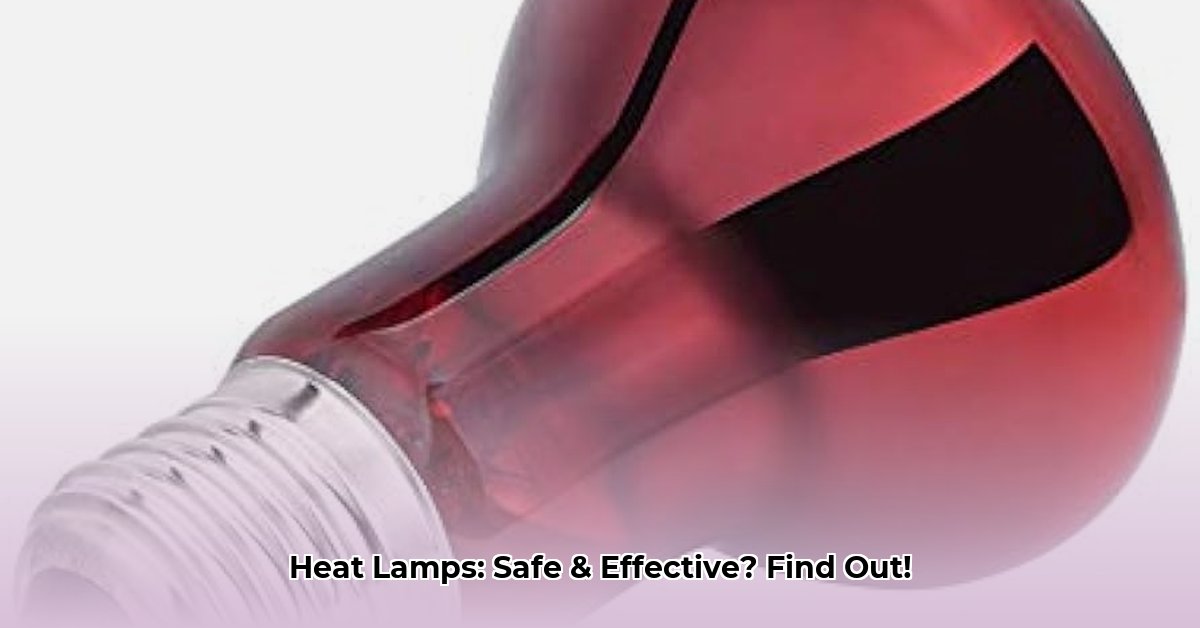
Need to keep your chicks warm, start seeds indoors, or just add some extra light to your workshop? Tractor Supply offers a wide variety of heat lamp bulbs, but choosing the right one can be confusing. This guide provides a step-by-step approach to selecting and using heat lamp bulbs safely and effectively, whether you're a seasoned farmer or a complete beginner. We'll cover choosing the right bulb, safe installation, maintenance, and troubleshooting.
Choosing the Right Heat Lamp Bulb: Matching the Bulb to Your Needs
The first step is identifying your specific needs. Are you brooding chicks? Starting seeds? Supplying supplemental heat to a barn? The application dictates the best type and wattage of heat lamp bulb. Tractor Supply offers several options:
Infrared Heat Lamps: These bulbs deliver efficient, targeted heat, ideal for animals and plants. The infrared radiation warms the target directly, minimizing wasted energy and reducing the risk of overheating the surrounding environment. (Think focused warmth, not overall room heating.)
Red Heat Lamps: Combining infrared heat with a calming red light, these are often preferred for brooding chicks, as the red light can help reduce stress levels. (A soothing nightlight with added warmth for your baby birds.)
Wattage (Power): This determines the amount of heat generated. Higher wattage equals more heat. A small space needs a lower wattage bulb than a larger area. Mismatching wattage to space can lead to overheating or insufficient warmth. (Think of wattage as the intensity of the heat.)
What wattage do you need? Here's a helpful table:
| Application | Suggested Wattage Range | Bulb Type Recommendation | Important Considerations |
|---|---|---|---|
| Brooding Chicks (Small Space) | 25-50 watts | Red or Infrared | Close monitoring is crucial, especially with higher wattage. |
| Brooding Chicks (Large Space) | 75-100 watts | Red or Infrared | Ensure proper ventilation to prevent overheating. |
| Greenhouse Plants (Small) | 25-50 watts | Infrared | Adjust wattage based on plant type and ambient temperature. |
| Greenhouse Plants (Large) | 75-100 watts | Infrared | Consider multiple lower-wattage bulbs for even heat distribution. |
| Barn Heat Supplement (Small) | 100-250 watts | Infrared | Use in conjunction with other heating methods if needed. |
| Barn Heat Supplement (Large) | 250+ watts | Infrared | Professional advice may be necessary for very large barns. |
Remember to always check the bulb's specifications for compatibility with your fixture.
Safe Installation: A Step-by-Step Guide
Improper installation is a serious fire hazard! Follow these steps precisely:
Safety First: Power Down: Before touching anything, completely turn off the power to the fixture. This is critical for your safety.
Fixture Compatibility: Confirm your fixture's wattage rating matches or exceeds your chosen bulb's wattage. Using a higher-wattage bulb than the fixture is rated for is extremely dangerous.
Secure Installation: Gently screw in the bulb, tightening firmly but avoiding over-tightening.
Strategic Placement: Maintain a safe distance from flammable materials (hay, bedding, etc.). Consult the manufacturer's guidelines for recommended distances.
Test and Observe: Turn the power back on and carefully observe the bulb for unusual heat, sounds, or smells. If anything seems off, immediately switch off the power.
Maintenance for Long-Term Use
Regular maintenance extends the life of your heat lamp and minimizes hazards.
Regular Inspections: Check the bulb and fixture for cracks, damage, or loose connections. Replace damaged components immediately.
Cleaning: Dust can reduce efficiency. Regularly clean the fixture and bulb with a soft cloth.
Dimming Bulbs: A dimming or flickering bulb indicates it's nearing the end of its life. Replace it promptly. Keeping a spare bulb is a wise precaution.
Troubleshooting Common Problems
Bulb Burns Out Quickly: This could indicate wiring problems. Check your connections and the fixture's integrity.
Insufficient Heat: The bulb might be low wattage or positioned too far away.
Animals Too Close: Reposition the lamp to maintain a safe distance and prevent burns.
Key Takeaways: Choosing the proper heat lamp bulb for your specific needs, ensuring safe installation, and performing regular maintenance are all crucial for effective and safe heating. Remember: Safety is paramount!